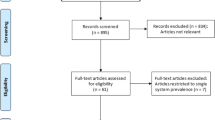Abstract
Using data from the Nova Scotia Atlee Perinatal Database, rates of adverse birth outcomes were compared among residents of Sydney, Nova Scotia and residents of Cape Breton County, Nova Scotia (excluding Sydney) with birth outcomes among residents of the rest of Nova Scotia. There was a small but statistically significant increase in the rate of major congenital anomalies in Sydney (2.8%) compared to the rest of Nova Scotia (2.3%) (adjusted RR=1.25, 95% CI=1.04–1.51). Rates of anomaly sub-groups were consistently elevated in Sydney compared to the rest of Nova Scotia, but most were not statistically significant. For the most part, the increased rates of congenital anomalies observed among residents of Sydney were not evident in the neighbouring community. Since Sydney and the rest of Cape Breton County share a similar risk factor and socio-demographic profile, other factors likely explain the increased rates observed in Sydney.
Résumé
En puisant dans la base de données périnatales Atlee de Nouvelle-Écosse, nous avons comparé les taux d’issues indésirables de la grossesse chez les habitants de Sydney et de Cape Breton County (sauf Sydney) à ceux des habitants du reste de la Nouvelle-Écosse. Nous avons constaté une augmentation faible, mais significative, des taux des principales anomalies congénitales à Sydney (2,8 %) par rapport au reste de la Nouvelle-Écosse (2,3 %) (RR standardisé = 1,25, 95 % IC=1,04-1,51). Les taux des sousgroupes d’anomalies étaient uniformément plus élevés à Sydney, mais dans la plupart des cas, pas de facon significative. Dans l’ensemble, les taux supérieurs d’anomalies congénitales observés chez les habitants de Sydney ne se retrouvaient pas dans la localité voisine. Comme Sydney et le reste de Cape Breton County affichent des facteurs de risque et un profil sociodémographique semblables, d’autres facteurs expliquent sans doute les taux supérieurs observés à Sydney.
Similar content being viewed by others
References
Joint Action Group-Muggah Creek History (in: http://www.muggah.org/mu_hist.htm)
CBCL Limited/Conestoga-Rovers & Associates Ltd. Phase 1 Site Assessment — Muggah Creek Watershed Sydney, Nova Scotia. January, 1999 (in: http://www.muggah.org/l_othe.htm)
Guernsey JR, Dewar R, Weerasinghe S, et al. Incidence of cancer in Sydney and Cape Breton County, Nova Scotia 1979–1997. Can J Public Health 2000;91(4):285–92.
Mao Y, Morrison H, Semenciw R. Mortality in Cape Breton, Nova Scotia, 1971–1983. Chronic Diseases in Canada Special Report No. 11. December, 1985.
Band P, Camus M. Mortality Study of Cape Breton County and Sydney, Nova Scotia. Presentation to Joint Action Group, Sydney, Nova Scotia, 1998.
Fair M, Cyr M, Allen AC, et al. Validation Study for a Record Linkage of Births and Deaths in Canada. Statistics Canada Catalogue No. 84F0013XIE. Ottawa, 1999.
Arbuckle TE, Wilkins R, Sherman GJ. Birth weight percentiles by gestational age in Canada. Obstet Gynecol 1993;81:39–48.
Statistical Application Software, Version 8.0, SAS Institute, Inc., Cary, North Carolina, USA.
Rothman KJ, Greenland S. Modern Epidemiology, Second Edition. Philadelphia: Lippincott-Raven, 1998.
Statistics Canada. Profile of Census Divisions and Subdivisions in Nova Scotia-Part B. Ottawa, 1992.
Kalter H, Warkany J. Medical Progress. Congenital malformations: Etiologic factors and their role in prevention (first of two parts). N Engl J Med 1983;308:424–31.
Sever LE. Epidemiologic aspects of environmental hazards to reproduction. In: Talbott EO, Craun GF (Eds.), Introduction to Environmental Epidemiology. Boca Raton: CRC Press, 1995;81–98.
Vrijheid M. Health effects of residence near hazardous waste landfill sites: A review of epidemiologic literature. Environ Health Perspect 2000;108(suppl 1):101–12.
Johnson BL. A review of the effects of hazardous waste on reproductive health. Am J Obstet Gynecol 1999;180:12–16.
Vianna NJ, Polan AK. Incidence of low birth weight among Love Canal residents. Science 1984;226:1217–19.
Berry M, Bove F. Birth weight reduction associated with residence near a hazardous waste landfill. Environ Health Perspect 1997;105:856–61.
Goldman LR, Paigen B, Magnant MM, Highland JH. Low birth weight, prematurity and birth defects in children living near the hazardous waste site, Love Canal. Haz Waste Haz Mat 1985;2:209–23.
Goldberg MS, Goulet L, Riberdy H, Bonvalot Y. Low birth weight and preterm births among infants born to women living near a municipal waste site in Montreal, Quebec. Environ Res 1995;69:37–50.
Author information
Authors and Affiliations
Corresponding author
Rights and permissions
About this article
Cite this article
Dodds, L., Seviour, R. Congenital Anomalies and Other Birth Outcomes Among Infants Born to Women Living Near a Hazardous Waste Site in Sydney, Nova Scotia. Can J Public Health 92, 331–334 (2001). https://doi.org/10.1007/BF03404991
Received:
Accepted:
Published:
Issue Date:
DOI: https://doi.org/10.1007/BF03404991




